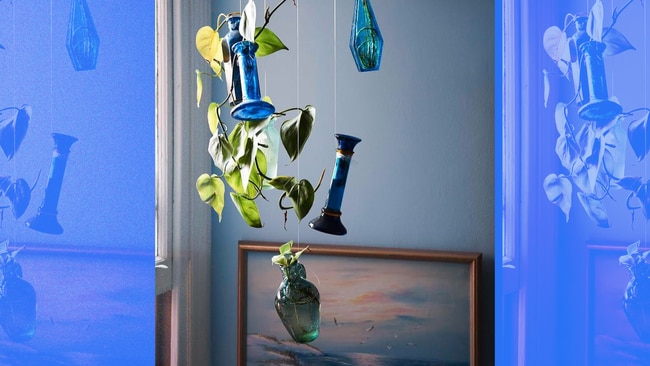How to grow your plants in water
This one is for the plant parents out there

This one is for the plant parents out there
It’s fun to watch what goes on below the surface when you grow plants in a clear glass container filled with water.
Placing a cutting in water to form roots is an easy way to propagate new plants. Cut a piece about 10-15cm long, with several leaves and at least one node (where a leaf attaches to the stem, often with a small swelling). Make the cut just below a node and remove any leaves that would end up being submerged. Most houseplants will form roots in water. The exact method will vary for different plants; online tutorials are plentiful.
Choose a clear bottle or vase with a narrow neck to help hold the cutting upright. Ensure the vessel is clean and fill it with rainwater, or good quality tap water. Place it in a spot with bright but indirect light. Change the water every five days or so, or more frequently if it gets cloudy, until roots form. Once the cutting has developed a healthy root system it is usually moved into a small pot to keep growing. Plants generally grow larger and faster in soil or potting mix where they will develop different types of roots. In soil, roots take up oxygen from the air spaces between soil particles and “drown” in waterlogged soils. The fibrous, brittle roots that develop in water are different, capable of absorbing the oxygen they need from dissolved oxygen in the water. That supply gets depleted in stagnant water, which is why it’s important to replenish oxygen by changing the water or aerating it.
To keep houseplants growing in water you need to supply nutrients with a soluble fertiliser at one quarter the label instructions. Replace the whole solution every four to six weeks. If your plant gets top heavy, move it to a larger vessel that you can half-fill with pebbles or marbles to add weight.
Plants that are well adapted to keep growing in water for a long time include devil’s ivy or pothos (Epipremnum), philodendrons, spider plant (Chlorophytum), Coleus, lucky bamboo (Dracaena sanderiana), Chinese evergreen (Aglaonema) and peace lilies.
Another fun project is to grow a flowering bulb indoors. At this time of year you can grow a hyacinth or other spring bulb in water. Special vases are available for this; alternatively, sit the bulb in a container of gravel or pebbles, adding just enough water to reach the base. The bulb, which already contains a complete food store, will send out roots, then leaves and flowers. This does, however, deplete the bulb so discard it afterwards.
Good to know
- You can grow cuttings of most herbs in water – but usually for a short time only
- An opaque or dark container limits the formation of algae in the water.
- Don’t use metal vessels as they can corrode in reaction to fertiliser salts, damaging the plants
- Some plants grow roots within a fortnight; others can take months



